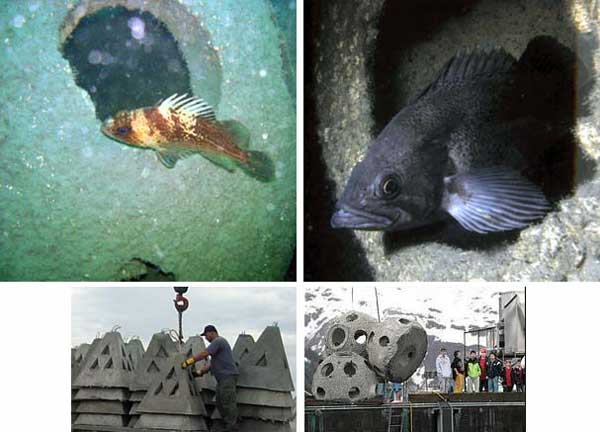Concern Lingers on Success of Artificial Reefs

Artificial reefs made of everything from oil rigs to subway cars to concrete rubble are sunk these days to the ocean floor to provide homes for marine life. But are they actually helpful?
Although such reefs have at times done more harm than good, scientists explained artificial reefs are getting better and better.
The deliberate creation of artificial reefs goes back to at least the 17th century in Japan, where fisherman built reefs with oyster shells to attract fish. Artificial reefs provide a base for corals, sponges and other life to encrust, in time drawing the rich diversity of sea life for which coral reef ecosystems are renowned.
"There are about 350 artificial reef sites around the state of Florida, contributing more habitats for ocean life than we would have otherwise," said Mark Perry, executive director of the Florida Oceanographic Society.
Good and bad
The past 50 years saw artificial reefs built using anything from obsolete oil rigs and decommissioned warships to junk such as tires and washing machines. Not all have proven boons to the environment — some have proven ineffective or actually harmful.
For instance, tires dropped off the coast of Fort Lauderdale in the 1970s ultimately broke loose from their restraints, killing natural reefs as they drifted about. Other trash simply did not make good reefs — the enamel coating on washers and dryers, for example, foils growth.
Sign up for the Live Science daily newsletter now
Get the world’s most fascinating discoveries delivered straight to your inbox.
"We've gotten smarter since then — we know what materials to use now to build artificial reefs," Perry said. "We don't want to just throw anything out there in the water — artificial reefs aren't just dump sites."
In the beginning of the 1970s, state and federal agencies started regulating artificial reef programs. Now the Environmental Protection Agency, U.S. Coast Guard and others help ensure that artificial reef materials are safe for seas. For instance, agencies require that all oil, asbestos and other toxic chemicals be cleaned out before sinking.
"Decommissioned naval vessels may take a long time to prepare, but once cleaned out, they provide a huge habitat, a lot of space for wildlife to live in there," Perry said. Construction rubble is also often used, and relatively benign in and of itself.
In addition, artificial reef designers are even crafting materials into balls, pyramids and other precise shapes that may favor certain species, "such as grouper or snapper," Perry said. "Artificial reef thinking is getting more refined."
Location, location
The specific placement of the artificial reefs is also important.
"You want to also make sure that artificial reefs are placed in a fairly stable environment and be outside of surf-pounding areas," Perry said. "You want to avoid them getting moved about by wave action."
However, "natural reefs are obviously still valuable," Perry said. "You can't just destroy a natural reef and put out an artificial reef as a replacement. Artificial reefs may help offset the growing worldwide loss of natural reefs a little bit, but they should not be the only answer."
Concerns do linger as to whether artificial reefs are good for the oceans.
"By concentrating fish all in one place and making them easier to catch, they may exacerbate issues of overfishing," said Jack Sobel, director of strategic conservation science and policy at the Ocean Conservancy in Washington, D.C.
Effect on natural reefs
It also remains uncertain whether artificial reefs help or harm natural reefs, which some scientists say are in great danger of disappearing as human activity alters ocean chemistry.
"The concern for many years was that artificial reefs would take fish away from natural habitat but it's never really been proven that conflict, that competition happens," Perry said. "There is possibly evidence that artificial reefs actually augment natural habitat areas as long as they're not right on top of them."
"Artificial reefs may provide corridors of a sort, allowing smaller fish to safely migrate from one natural reef to another, instead of just crossing a huge empty expanse where they might get gobbled up," Perry explained. "I do think having artificial reefs is better than having just natural ones."
Future research is needed to determine more about what value artificial reefs provide, if any, Sobel said.
Perry agreed. "There's a lot of knowledge yet to gain from artificial reefs," he noted.
- Planet Earth 2007: Top 10 Science Revelations
- Increasing Acid Could Kill Most Coral by 2050
- The Craziest Science Stories of 2007










